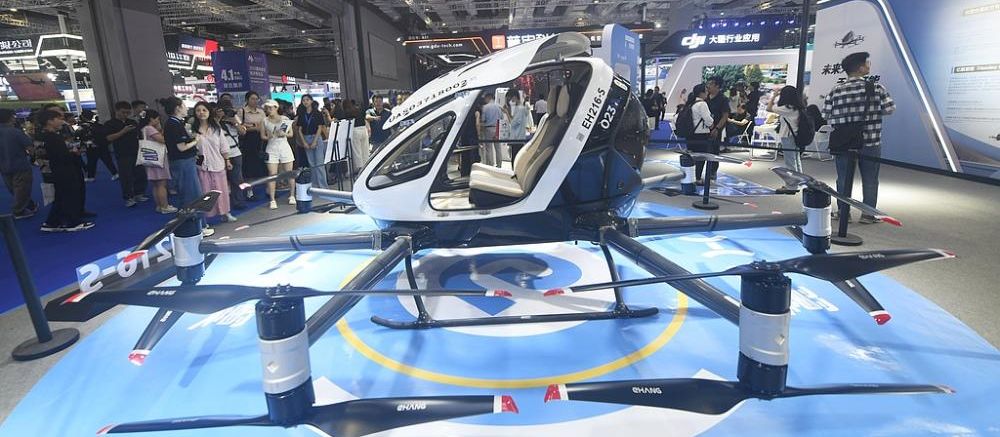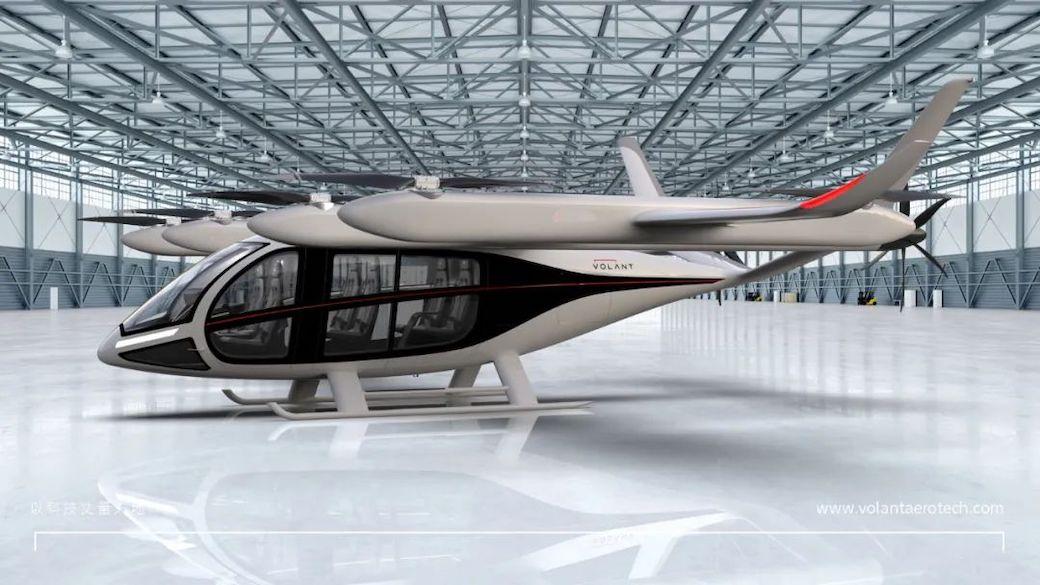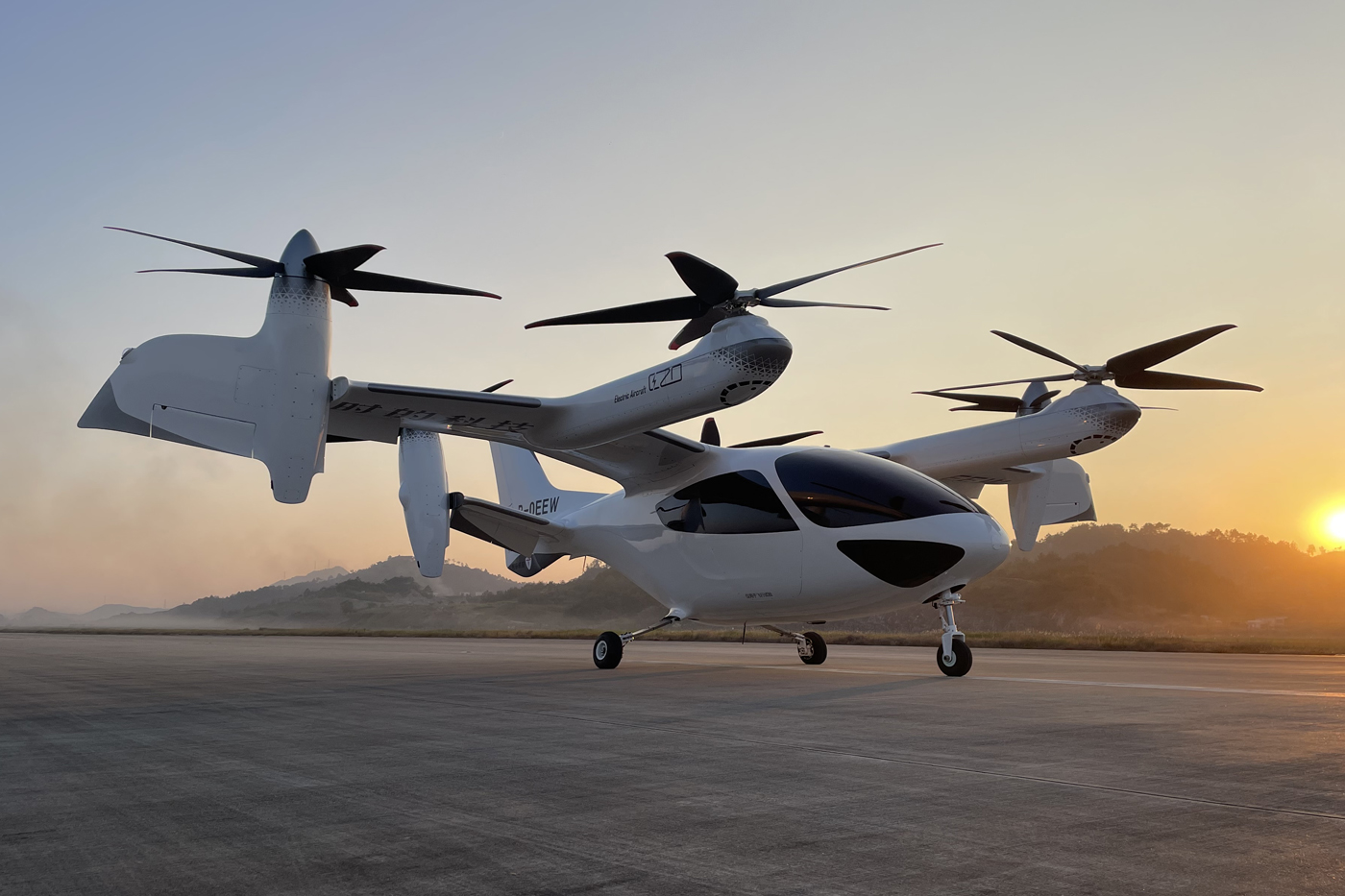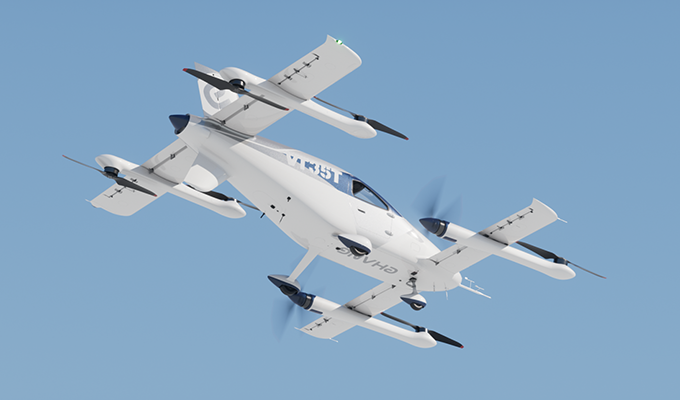
2025 Shanghai Advanced Air Mobility Expo Reshapes Urban Flight
Shanghai’s inaugural International Advanced Air Mobility Expo at the National Exhibition and Convention Center (NECC) in Shanghai, where the movement to the Low Altitude Economy met commercial reality. Featuring 300 exhibitors and 44 debut products on the exhibition floor, this four-day event in July 2025 marked the shift of electric vertical takeoff and landing aircraft (eVTOL) from prototype curiosity toa billion-dollar industry.
Shanghai-based Volant Aerotech struck the largest international passenger eVTOL order in Chinese history on the expo’s opening day. The company inked a $1.75 billion intent deal with Thailand’s Pan Pacific Company Limited for 500 Volant VE25-100 aircraft, commercially branded as Skylar. These five-passenger (1 pilot + 4 passengers) aircraft, with their compound wing configuration and 200-kilometer range, will operate at cruising speeds of 235 kilometers per hour across Thailand, the Maldives, and neighboring regions for inter-island transport and emergency rescue operations.
 Volant Aerotech Volant VE25-100 (Skylar)
Volant Aerotech Volant VE25-100 (Skylar)
The deal involves a tripartite arrangement with China National Aero-Technology International Engineering Corporation (CATIC-ENG), a subsidiary of the Aviation Industry Corporation of China that will provide low-altitude infrastructure support. CATIC, established in 1979 as China’s first military trade company, has evolved into a state-owned conglomerate with over $40 billion in trade volume, specializing in aviation product exports to more than 40 countries.
Pan Pacific, headquartered in Bangkok with nearly 40 years of experience in infrastructure and aviation logistics projects, has managed over 30 international projects across high-end commerce, luxury real estate, energy, and large-scale infrastructure development. The company's current major aviation project includes the Thinadhoo International Airport development in the Maldives, which was contracted in February 2024 and remains under development.
Beyond the Headline Deal
The Volant agreement wasn't an isolated event. Just one week prior to the expo, Shanghai-based rival TCab Technology signed a $1 billion memorandum of understanding with UAE-based Autocraft for 350 E20 eVTOL aircraft, marking another significant milestone in China’s eVTOL export ambitions.
 TCab Technology E20 eVTOL
TCab Technology E20 eVTOL
The expo showcased technological advances that signal the industry’s maturation beyond the prototype stage. Among the 44 debut products, 19 global firsts and 25 domestic firsts were the world’s first seven-seat eVTOL and the world’s first mass-produced large hydrogen-powered vertical takeoff and landing fixed-wing drone. While specific details about these aircraft remain limited from available sources, their presence indicates manufacturers are scaling up from smaller demonstration models to commercially viable passenger configurations.
Shanghai’s Strategic Low-Altitude Economy Push
The expo reflects Shanghai’s broader ambitions in the low-altitude economy. The city has developed a comprehensive action plan running through 2027, targeting a core industrial value of 50 billion yuan ($6.9 billion). By 2027, Shanghai aims to establish at least 400 low-altitude flight routes and implement over 100 low-altitude flight service applications across urban passenger transport, logistics, and emergency services.
Shanghai’s strategy encompasses three development phases: preparation (completed by the end of 2024), construction and trial operation (creating the Yangtze River Delta regional management system by 2025 with at least 150 flight routes), and optimization (finalized by 2027). The city is positioning itself as the low-altitude economy hub for the broader Yangtze River Delta region, leveraging its role as a central economic hub to address logistical bottlenecks and reduce transit times.
The East Hongqiao area, Shanghai’s sole aerotropolis demonstration zone, serves as the focal point for this development with its “1+2+3+4” strategic layout: one low-altitude economy industrial park, growth from headquarters and digital economies, three application scenarios in general aviation, logistics, and cultural tourism, and four centers focusing on airworthiness, innovation, talent training, and support services.
The Ecosystem Imperative
The expo highlighted a critical insight about the low-altitude economy: success depends on ecosystem collaboration rather than individual company achievements. As demonstrated by the complex supply chains required for eVTOL development, spanning flight control systems, avionics, batteries, motors, airframe structures, and composite materials, no single company can master every component.
The low-altitude economy features extensive industrial, supply, and policy chains that require coordination among government entities, industry players, academic institutions, research facilities, and end-users. This collaborative approach addresses the practical challenges of scaling eVTOL operations, from manufacturing efficiency to regulatory compliance and infrastructure development.
Companies like Volant Aerotech exemplify this ecosystem approach. Founded in June 2021 by aviation professionals from COMAC, Autoflight, and Chinese subsidiaries of Airbus, GE, Honeywell, and Collins, the company has secured five funding rounds in 2024 alone from investors including Shunwei Capital, CDH Investments, Legend Capital, and others.
Real-World Applications Beyond Flying Cars
The expo emphasized practical applications across multiple industries. Shanghai is developing low-altitude industrial logistics, cultural tourism, and specialized industrial parks tailored to local conditions. The applications extend beyond passenger transport to include agricultural operations, emergency services, cargo delivery, surveillance, and disaster response.
These diverse use cases reflect the low-altitude economy’s evolution from a niche aviation concept to a comprehensive economic framework. The integration spans primary, secondary, and tertiary economic activities, creating spillover effects across traditional industry boundaries.
The convergence of technological maturity, regulatory support, and commercial demand demonstrated at the expo suggests the low-altitude economy is transitioning from experimental phase to market reality. As cities like Shanghai build the infrastructure and regulatory frameworks necessary for widespread adoption, the expo’s deals and demonstrations point toward a future where low-altitude flight becomes integrated into urban transportation and logistics networks.



